Meet the Sea Turtles of Florida
Everyone’s favorite marine reptile: sea turtles! These ancient creatures even capture the attention of the saltiest of sailors, and rightfully so. Florida is home to five of the seven species of sea turtles found worldwide. Visiting Florida soon? Come meet the sea turtles of Florida you might encounter.
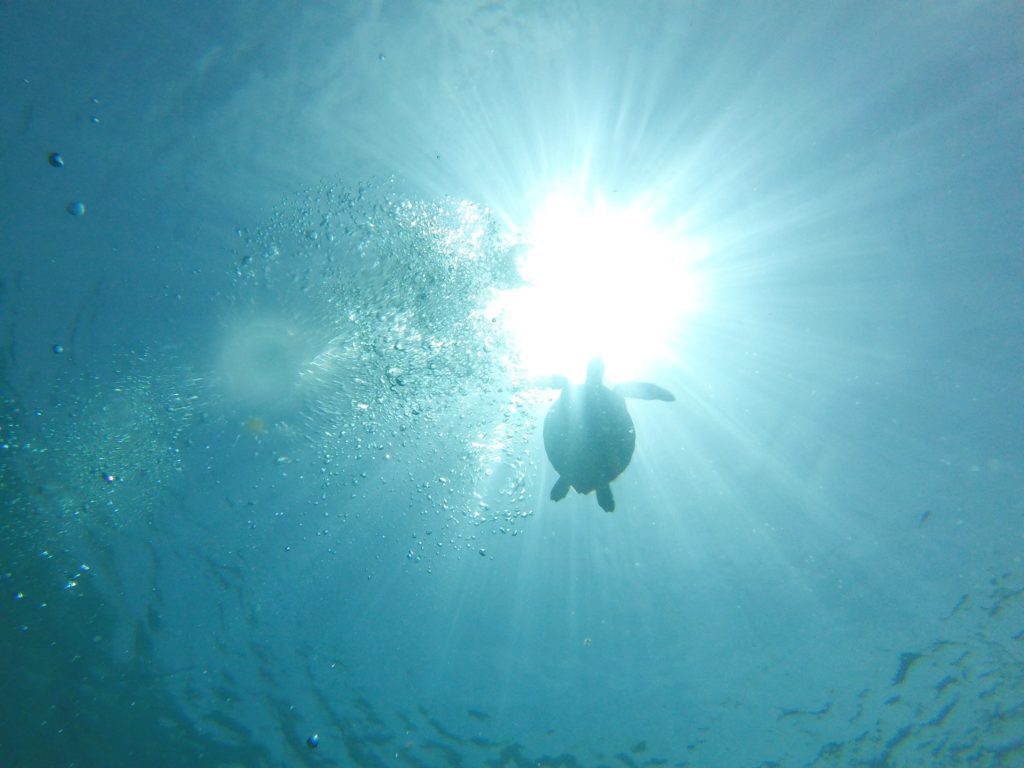
Why are so many sea turtles found in Florida?
Other than the obvious fact that it’s surrounded by the ocean, Florida actually has a few things going for it in terms of attracting marine life:
- The Florida Reef Tract. This 360 linear mile reef system runs from Dry Tortugas National Park west of Key West, all the way to St Lucie Inlet in Martin County. The reef system is the third longest barrier reef in the world after The Great Barrier Reef in Australia and the Mesoamerican Barrier Reef in Central America and Mexico.
- Proximity to the Gulf Stream. This major ocean current brings warm water from the Gulf of Mexico all the way to Europe, passing closely by South Florida and the Florida Keys. An abundance of marine life migrate in this current for reproduction and feeding.
These two features give sea turtles plenty of habitat for food and protection.
Additionally, adult female sea turtles come to the beaches of Florida to lay their eggs multiple times between the months of March and October!
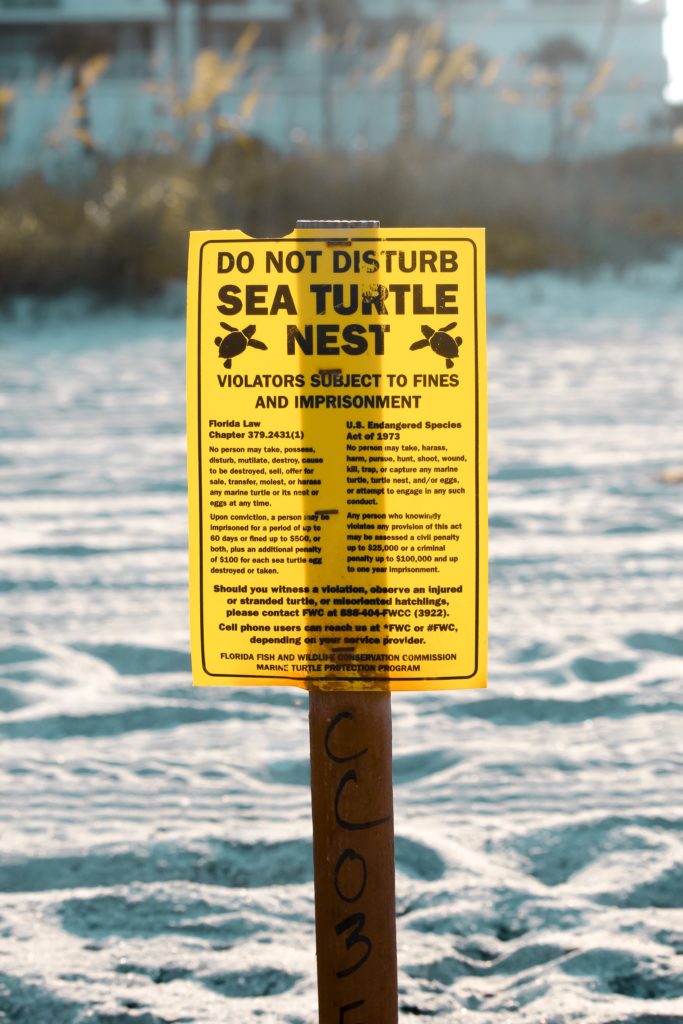
Meet the Crew: the Sea Turtles of Florida
Although we see some more than others, Florida is home to five different species of sea turtles:
- Loggerhead Sea Turtle
- Kemp’s Ridley Sea Turtle
- Hawksbill Sea Turtle
- Green Sea Turtle
- Leatherback Sea Turtle
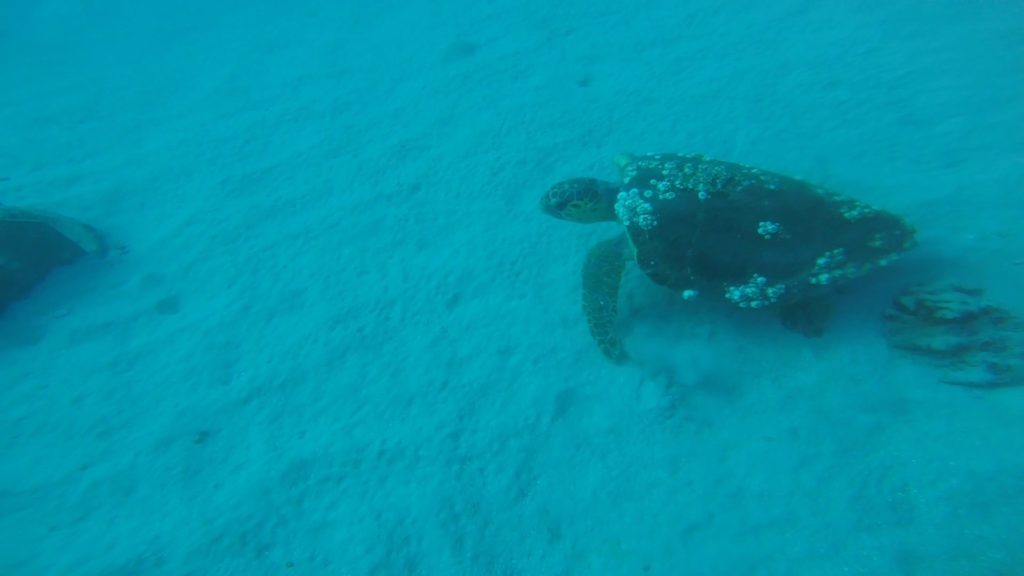
Loggerhead Sea Turtle
The most abundant sea turtle in Florida, loggerheads can typically be found hanging out in a reef or near a shipwreck.
Loggerheads are clearly identified by their large bulbous heads (hence the name, loggerhead). These large heads, and strong jaws, allow loggerheads to break shells to eat the goodies inside.
Length of Shell: 2 – 3.5 feet
Weight: 150 – 350 lbs
Age: 50 or more years
Diet: Carnivore; shellfish, lobster, conch.
Habitat and Behavior:
Their range stretches most warm coastal waters where they may travel 100’s of miles in the ocean current. Sounds like a familiar movie, doesn’t it?
Their food is in shallower waters between 10 – 90 feet, so running into one on a dive is possible.
Nesting Location:
South Florida and the Atlantic Coast of Florida are some of the busiest loggerhead nesting sites in the world.
Loggerhead sea turtles will travel 100’s of miles to return to the same beach to nest that they were born on.
Conservation Status:
Threatened in Florida (2019)
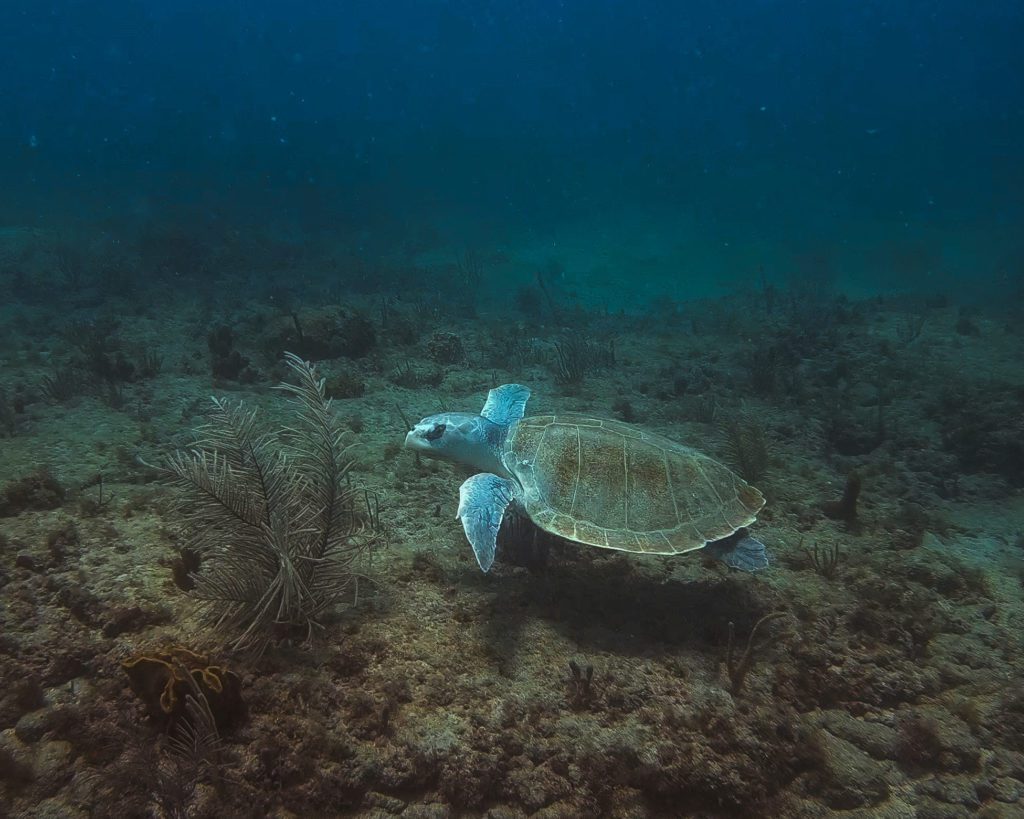
Kemp’s Ridley Sea Turtle
If you spot a Kemp’s Ridley while diving, count your blessings as they are the most endangered species of sea turtle in the world.
The small, near circular, olive-green to grey shell is the distinctive feature to look for when identifying a Kemp’s Ridley.
Length of Shell: 2 feet
Weight: Around 100 lbs
Age: 50 years or more
Diet: Omnivore; small crabs, shellfish, and occasionally seagrass.
Habitat and Behavior:
You’re more likely to see these in the Gulf of Mexico and on the west coast of Florida. Here, they stick to the shallower waters to dive down and catch their prey.
Nesting Location:
Similar to loggerheads, Kemp’s Ridley turtles will return to the same beach they were born.
Conservation Status:
Endangered (2019)
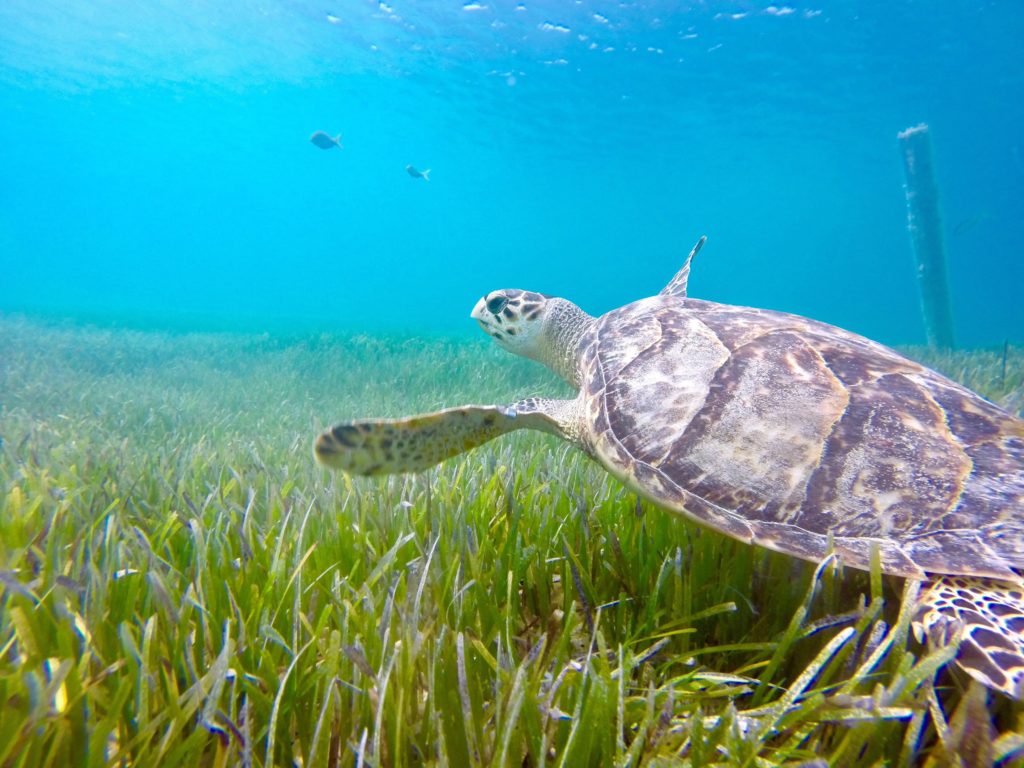
Hawksbill Sea Turtle
Hawksbill sea turtles can be seen roaming coral reefs and shallow coastal waters where they like to munch on sponges, jellyfish, and other small critters.
They’re beautiful brown to yellowish shells are truly unique and to this day can be found on shell trading markets around the globe (unfortunately).
Keep a look out for their “beak shaped nose”, hence the name.
Length of Shell: 2 – 3.5 feet
Weight: 95 – 165 lbs
Age: 30 to 50 years
Diet: Omnivores: algae, mollusks, shellfish, sponges, jellyfish
Habitat and Behavior:
Highly migratory as they’ll travel all around the world. This has contributed to their endangered status as they don’t enjoy the same amount of protection worldwide that they do in the US.
Nesting Location:
Tropical beaches all over the world are used by Hawksbill Sea Turtles for nesting.
Typically, like other turtles, they go back to the same beach they were born on.
Conservation Status:
Endangered (2019)
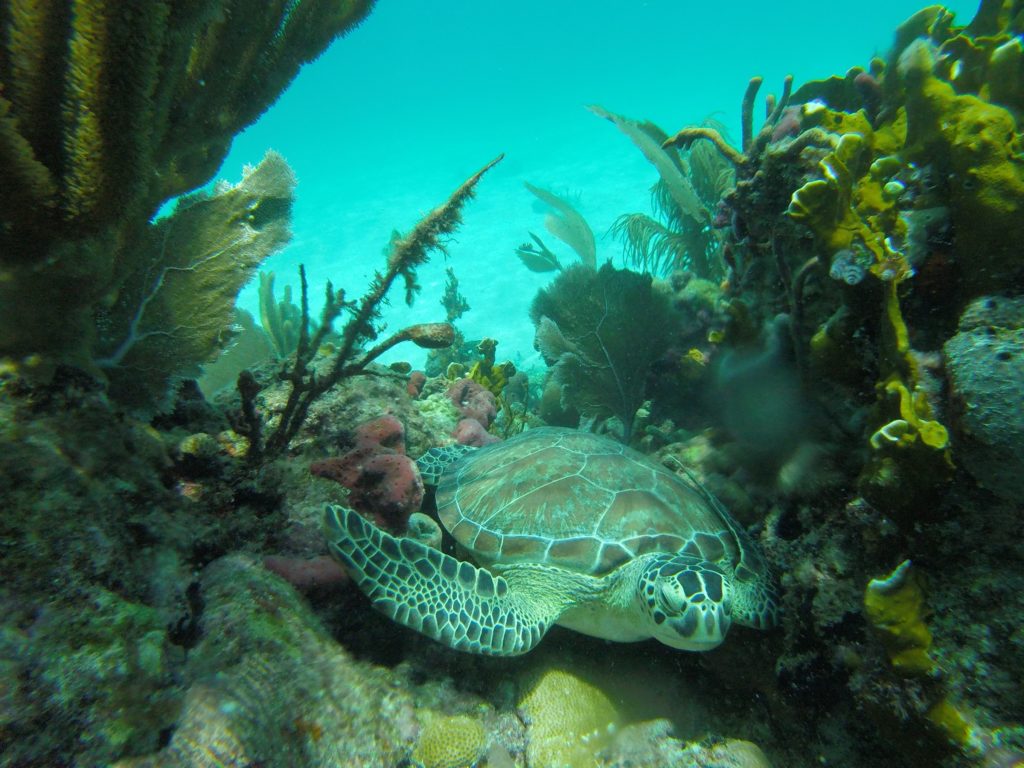
Green Sea Turtle
Named not for the color of their shell, but for their fatty tissue. Why? Green sea turtles eat seagrass and algae which pigments their fat!
This species of sea turtle are among the biggest in the world, with the largest one ever recorded at 650 lbs! That’s a lot of seagrass being eaten!
Length of Shell: 3 – 4 feet
Weight: 250 – 450 lbs
Age: 80+ years
Diet: Herbivores, sea grass, sargassum, and algae
Habitat and Behavior:
Green sea turtles can be found around coral reef systems and sea grass beds. These areas provide shelter along with enough food for the turtle to survive.
Similar to other turtles, green sea turtles migrate far distances between feeding and nesting sites.
Nesting Location:
South Florida is a popular nesting site for green sea turtles, which are second to only loggerhead sea turtles in terms of nests in Florida.
Conservation Status:
Threatened (2019)
Leatherback Sea Turtle
As the name would imply, leatherback sea turtles are not exactly known for their shell plates. Much rather, the world’s largest turtle is covered with a tough, leather-like, black to blueish skin.
To add to the sheer wonder of these animals, leatherback sea turtles can even dive down to depths of 3,000 + feet.
Length of Shell: 4 to 5.5 feet
Weight: 650 to 1200 lbs, max 2000 lbs
Age: Around 50 years
Diet: almost entirely jellyfish
Habitat and Behavior:
Rarely will you ever see a leatherback sea turtle while diving. Their lives are spent out deep at sea while migrating all over the world, including cold environments.
Nesting Location:
South Florida will have a few leatherback nests, but not many. Trinidad and Tobago in the Caribbean has one of the busiest leatherback nesting sites in the world.
Conservation Status:
Endangered (2019)
Our Sea Turtle Encounters in Florida:
Threats Sea Turtles face:
All species of sea turtles are facing many threats to their health and populations:
- Coastal development causing human disturbances to nesting and hatching turtles.
- Incidental capture in commercial fishing practices.
- Sea turtles ingesting plastic pieces from pollution.
- Loss of habitat due to climate change and warming temperatures.
- Accidental strikes from boats.
- Entanglement from ghost nets and other fishing equipment.
For more, check out our post on how to help save sea turtles!
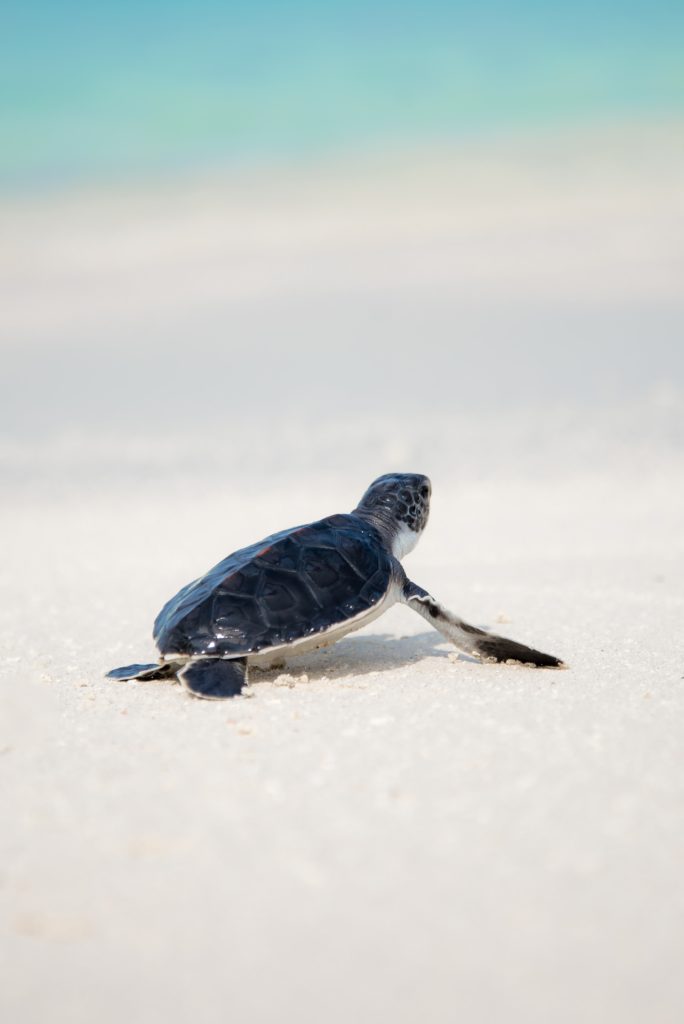
Source Information and Marine Life Resources:
The information from this post was sourced from our very own Marine Scientist, Laura, and the book “Reef Fish Identification – Florida, Caribbean, Bahamas – 4th Edition” by Paul Humann and Ned Deloach.
For more information on sea turtles, fish, coral, and reef creatures, we HIGHLY recommend their entire series of books for your library:
Enjoy this Post? Pin it!
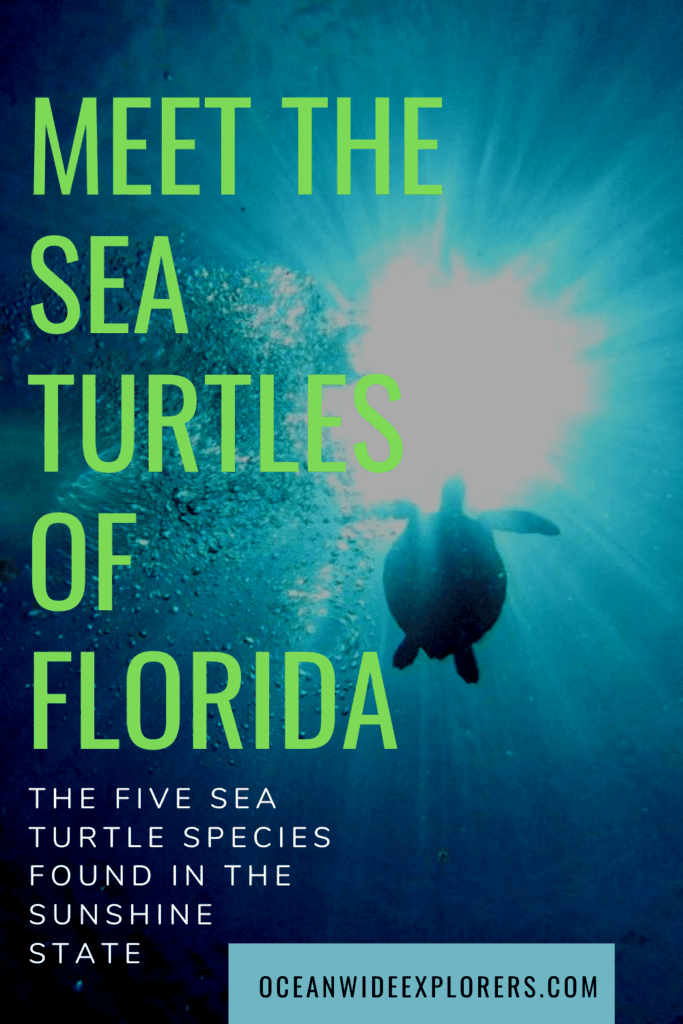
Read More About Marine Life in Florida
We hope you enjoyed our post on the sea turtles found in Florida. Hopefully you’ll find it useful on your next adventure! Here are a few more ocean-loving articles we think you should read next:
- 11 Coolest Ocean Animals Found in Florida
- Common Sharks Seen While Diving in Florida
- Complete Guide to Shark Diving in Jupiter
- 18 Facts You Should Know About Lionfish
Have you seen a sea turtle before in Florida? What kind was it? Let us know below!

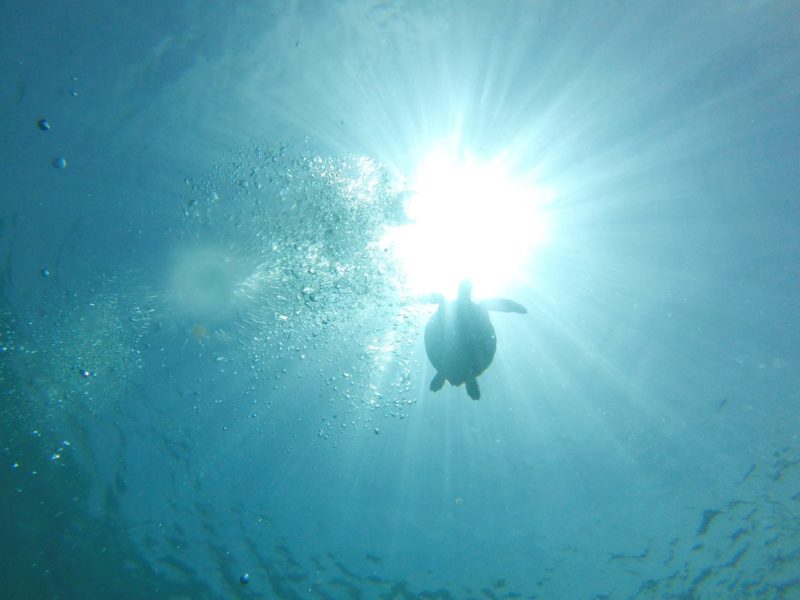




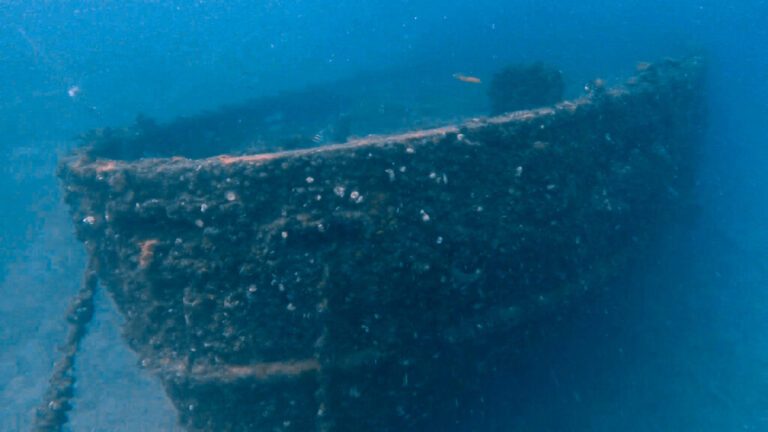
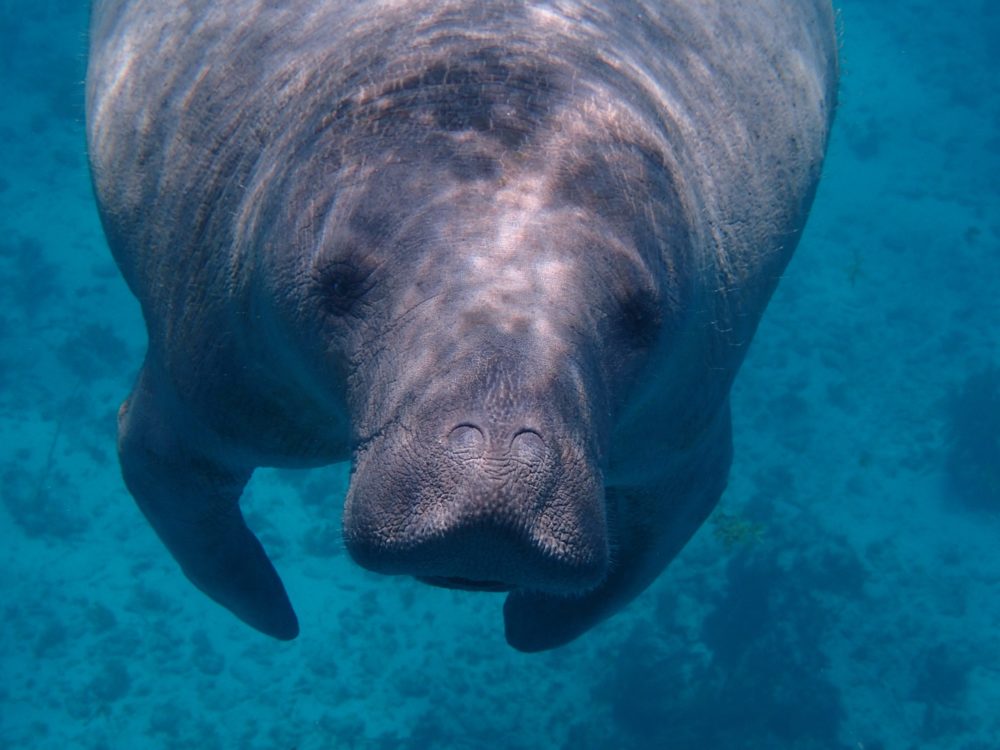
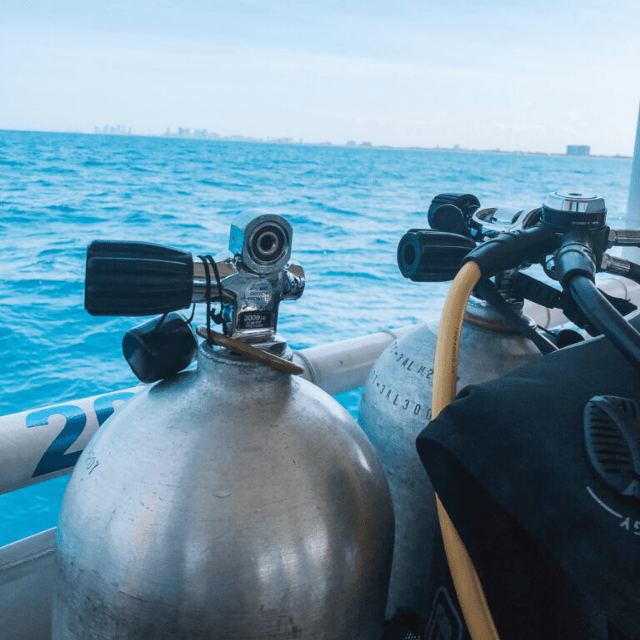
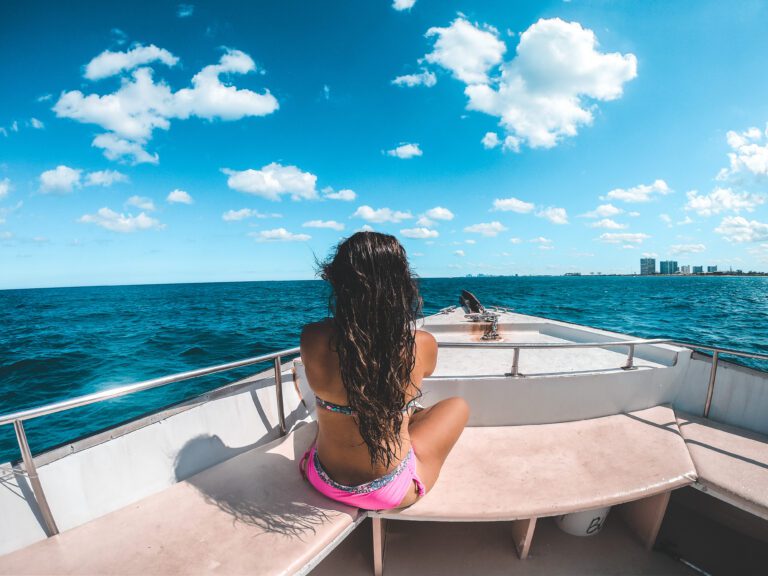
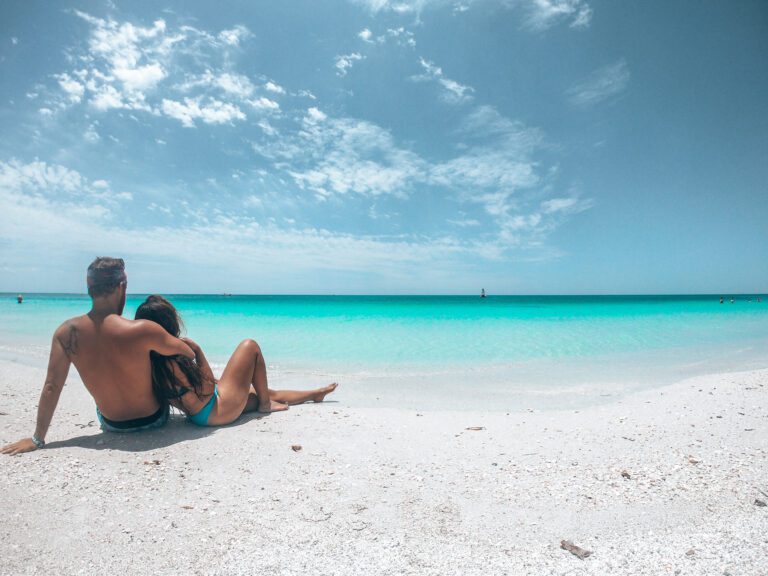
One Comment